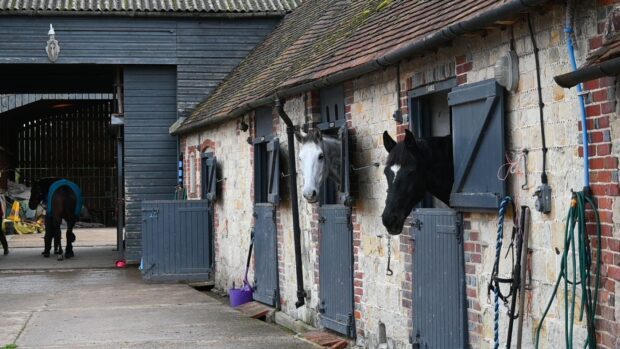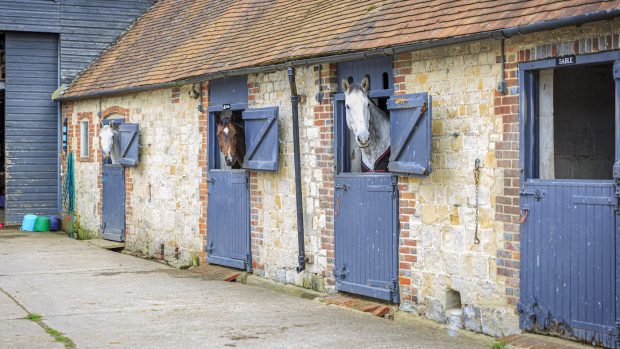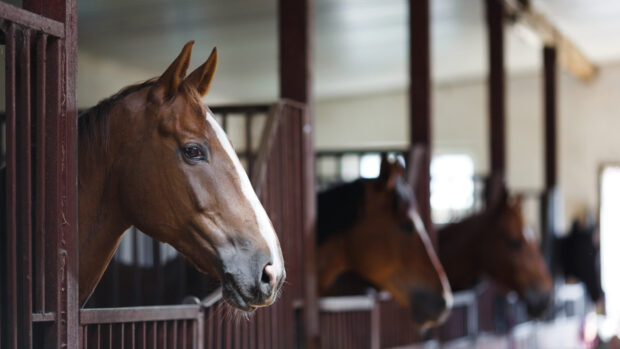If you keep your horse on its own at home and have a vacant stable and some extra land, taking on a livery could be a good option to provide your horse with a companion — as well as a means of making some money.
And as a private set-up you are likely to be in high demand as a potential livery yard.
“Plenty of people out there like the idea of a quiet, private yard,” says Lee Hackett at the British Horse Society (BHS).
Celia Ahrweiller Le Gall keeps her horse at a small yard in Taplow, Bucks.
“I like the independence of this system,” she tells H&H. “My horse works the way I want and is only ridden by me.
“I decide which vet and farrier I want him to see and I’m completely in charge of his nutrition.”
Getting on with a prospective livery on a personal level is vital — they will be at your property every day.
Adverts in local tack shops, Facebook pages and forums can be very helpful in finding the right person.
“But the best thing really might be word of mouth,” says Lee.
Don’t be afraid to ask for references — for both the owner and horse — from an instructor or vet.
However friendly the prospective livery seems, a contract is crucial.
“We cannot overemphasise how important a contract is, even if the yard owner and client are old friends,” says Lee. “Things can and do go wrong, unfortunately.”
Sunderland-based Anne Johnson took 4 liveries on to her small yard.
“They squabbled with each other, left horses in without water or feed for days and I ended up turning out, bringing in, rugging and feeding all of them for a ‘mates rates’ DIY fee,” she recalls.
“They totally took advantage of my kind nature and the fact I wouldn’t see the horses go without.”
The BHS has a template agreement available that can be adapted for your circumstances.
But Lee advises: “The money that it costs to involve a solicitor in the process of drawing up an agreement could easily be money well spent.”
Equine law specialist Lottie Goldstone at Harrison Clark Rickerbys adds: “It is advisable to have a reasonable trial period. This way, the nature of the horse (and rider!) can be ascertained and whether it is feasible to share a yard with them.”
The prospect of complying with relevant legislation — including adequate insurance and health and safety regulations — can deter people from the idea of having a livery.
“Public liability insurance is essential,” warns Lee.
But to find the best cover for your situation, he suggests getting specialist insurance advice.
The BHS’s approvals department is a good port of call to discuss the legislation involved, as is the Government’s website (www.gov.uk/farm-and-livery-horses/stables-and-livery-yards).
The extra cost of this cover needs to be considered in your pricing.
Find out the going rate in your area by asking around and looking at adverts — but remember not to compare yourself with bigger yards boasting better facilities.
“A couple of liveries are not going to bring in huge amounts of money, so the income needs to be balanced with the downsides,” says Lee.
Celia pays her friend just £50 a month — which she realises is a bargain — but in return she helps with a lot of the yard work.
Charlie Newton, who is based in the Scottish Borders, kept an ex-racehorse on a private yard free of charge in return for looking after the owner’s 3 horses.
Indeed, aside from the financial element, a livery can give you the chance to divvy up jobs, offer on-site holiday cover, a hacking companion and a second opinion on tap.
Looking to save money on your livery bill? Take a look at our top tips
This article was first published in Horse & Hound magazine (26 September 2013)




